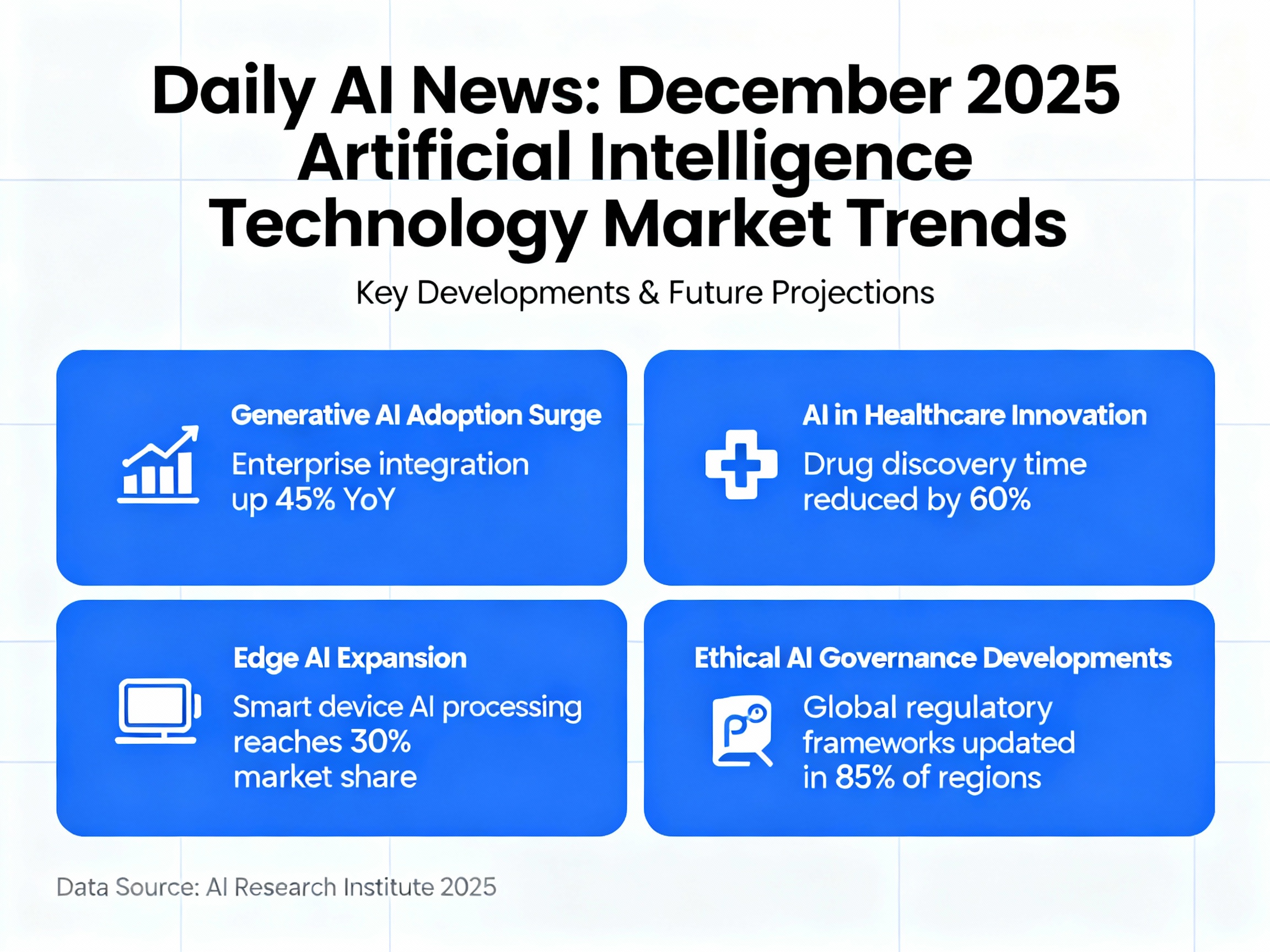AI Revolution: Trump's Action Plan, OpenAI's Expansion, and the Future of AI in 2025##
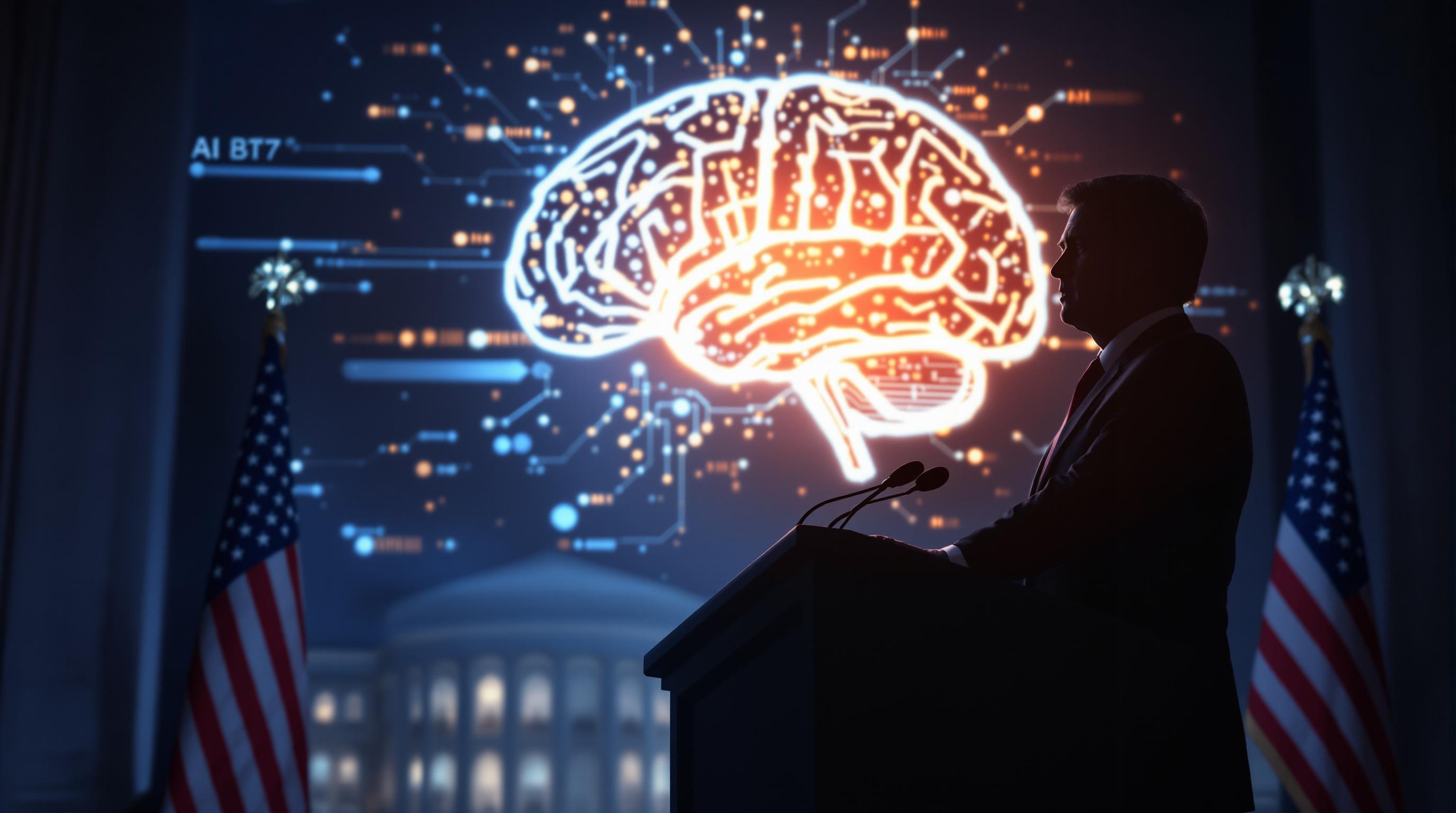
Trump Administration Unveils Landmark AI Action Plan
The Trump administration is poised to make a significant splash in the AI landscape with the unveiling of a landmark AI Action Plan. The announcement is slated to occur at the highly anticipated 'Winning the AI Race' summit, marking what many consider the administration's most assertive foray into tech policy. This isn't just another policy footnote; it's a declaration of intent to secure American dominance in the burgeoning field of artificial intelligence.
The Genesis of the Plan: Executive Order 14179
This ambitious plan is the direct result of Executive Order 14179, an initiative spearheaded by the Trump administration with the explicit goal of establishing and maintaining American leadership in AI. The order served as the foundational blueprint, setting the stage for a comprehensive strategy to outpace global competitors, particularly China. Think of it as the starting gun in a race where the prize is nothing less than global technological supremacy. It signals that the U.S. intends to not only participate but to win in the AI News arena.
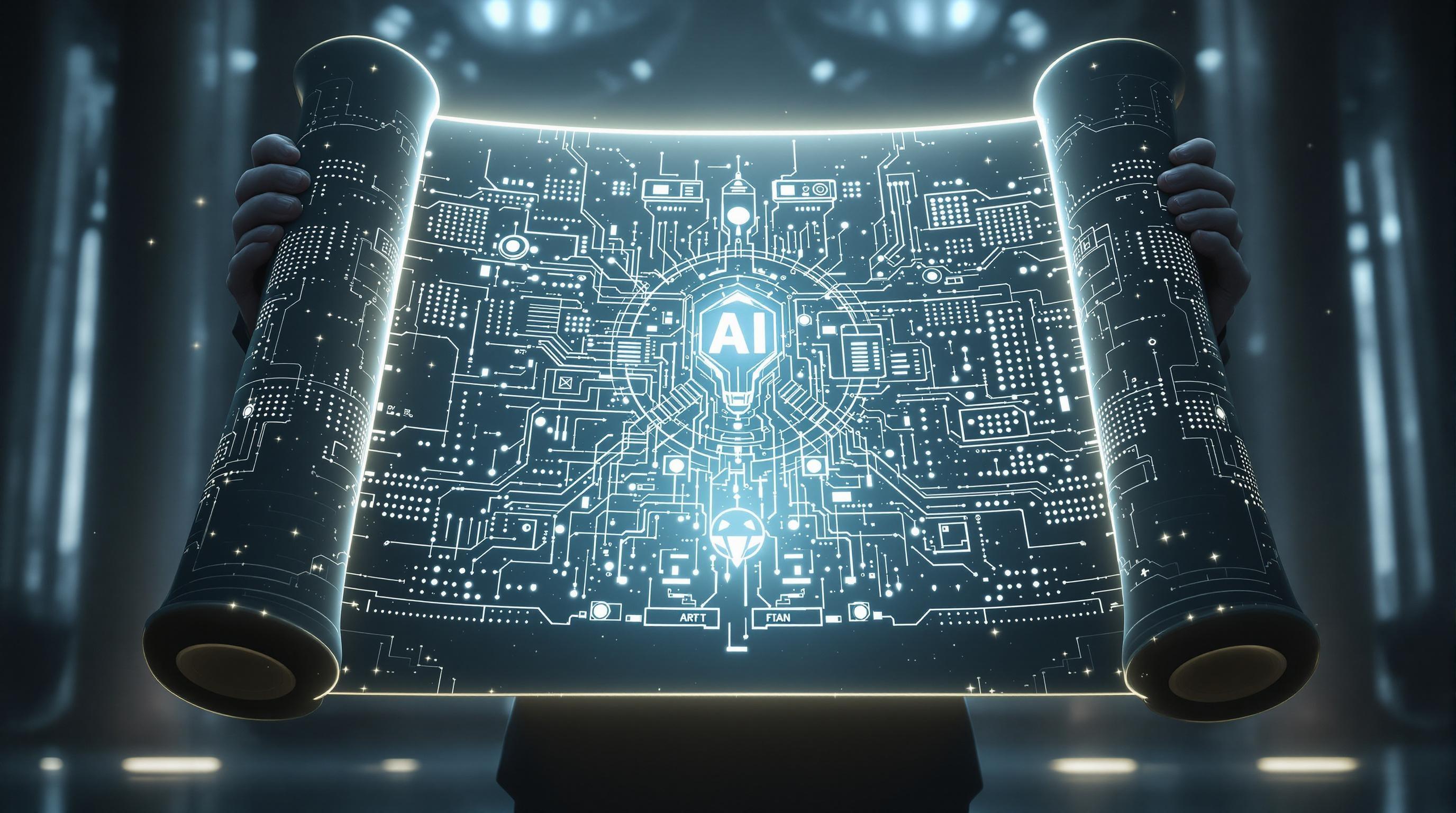
Core Pillars of the AI Action Plan
So, what exactly does this plan entail? It's built upon several key provisions designed to address critical areas for AI advancement:
Energy Infrastructure Acceleration: Recognizing that AI development is a power-hungry endeavor, the plan prioritizes streamlining the approval process for energy infrastructure projects. This means faster deployment of the necessary resources to fuel AI innovation. Consider it akin to widening the roads so the AI innovation vehicles can travel at full speed.
Federal Regulatory Preemption: To avoid a tangled web of conflicting state regulations, the plan seeks to establish federal preeminence in AI regulation. This move aims to create a unified and predictable regulatory environment, encouraging investment and innovation without stifling bureaucracy. In essence, it prevents a patchwork of rules that could hamper progress.
Export Promotion: Understanding the global nature of the AI market, the plan includes provisions to actively promote the export of American AI technologies. This initiative seeks to expand the reach of U.S. AI companies and solidify their position on the world stage. It's about ensuring that 'Made in America' AI becomes a hallmark of quality and innovation worldwide. You might use a tool like DeepL, an AI-powered translation tool, to aid in this global push.
Bias-Free AI Mandate: Acknowledging the ethical considerations surrounding AI, the plan mandates the development and deployment of AI systems free from bias. This aims to ensure fairness and equity in AI applications, preventing discriminatory outcomes. This could also apply to tools like GPTZero, which aims to detect AI generated content.
Addressing Key Challenges and Competition
This AI Action Plan isn't just a collection of policies; it's a strategic response to pressing challenges. The plan directly addresses the intensifying AI competition with China, recognizing the need for decisive action to maintain America's edge. It also tackles the issue of regulatory fragmentation, aiming to create a more cohesive and innovation-friendly environment. Think of it as a comprehensive toolkit designed to overcome obstacles and accelerate AI development.
The plan represents the Trump administration's most significant tech policy declaration, underscoring the strategic importance of AI in the 21st century. It's a clear signal that the U.S. intends to be a leader, not a follower, in the AI revolution. It's a move to counter China's advancements, which may be supported by tools such as Kimi. Kimi is a Chinese LLM that some sources say outperforms GPT-4.
By tackling regulatory hurdles, promoting exports, and prioritizing ethical considerations, the Trump administration hopes to create a fertile ground for AI innovation. The success of this plan will ultimately depend on its effective implementation and the ability of the U.S. to foster a dynamic and competitive AI ecosystem. The 'Winning the AI Race' summit may provide insight in to the US AI Strategy.
OpenAI and Oracle Dramatically Expand Stargate AI Infrastructure Initiative
The AI landscape is rapidly evolving, and the recent expansion of the Stargate project by OpenAI and Oracle signals a massive leap forward in AI infrastructure. This initiative not only underscores the growing demand for AI computational power but also hints at the transformative impact AI will have on various industries.
OpenAI and Oracle's Colossal Expansion
OpenAI, known for pushing the boundaries of artificial intelligence, and Oracle, a giant in cloud infrastructure, are significantly scaling their Stargate project. The expansion includes the addition of a staggering 4.5 gigawatts of data center capacity. To put that into perspective, that's enough power to light up several small cities! This capacity is specifically designed to support the immense computational needs of advanced AI models, ensuring they can operate efficiently and effectively.
Exceeding 5 Gigawatts: Powering the AI Revolution
The total capacity under development for the Stargate project now exceeds 5 gigawatts. This colossal amount of power isn't just for show; it's intended to power over 2 million AI chips. These chips are the workhorses of AI, responsible for processing vast amounts of data and running complex algorithms. Having this level of capacity ensures that AI models like ChatGPT, a revolutionary conversational AI, have the resources they need to evolve and improve, and that new groundbreaking models have the infrastructure to even exist.
Oracle's $30 Billion Cloud Deal: A Landmark Partnership
Oracle's commitment to this project is underscored by a $30 billion cloud deal, representing a major technology partnership between the two companies. This investment demonstrates the confidence Oracle has in the future of AI and its willingness to bet big on the Stargate initiative. It’s a mutually beneficial arrangement, with OpenAI gaining access to Oracle's cutting-edge infrastructure and Oracle solidifying its position as a key player in the AI revolution. These partnerships are crucial to innovation. For example, similar to Google's Google Cloud AI that provides cloud computing services focused on AI and machine learning tools.
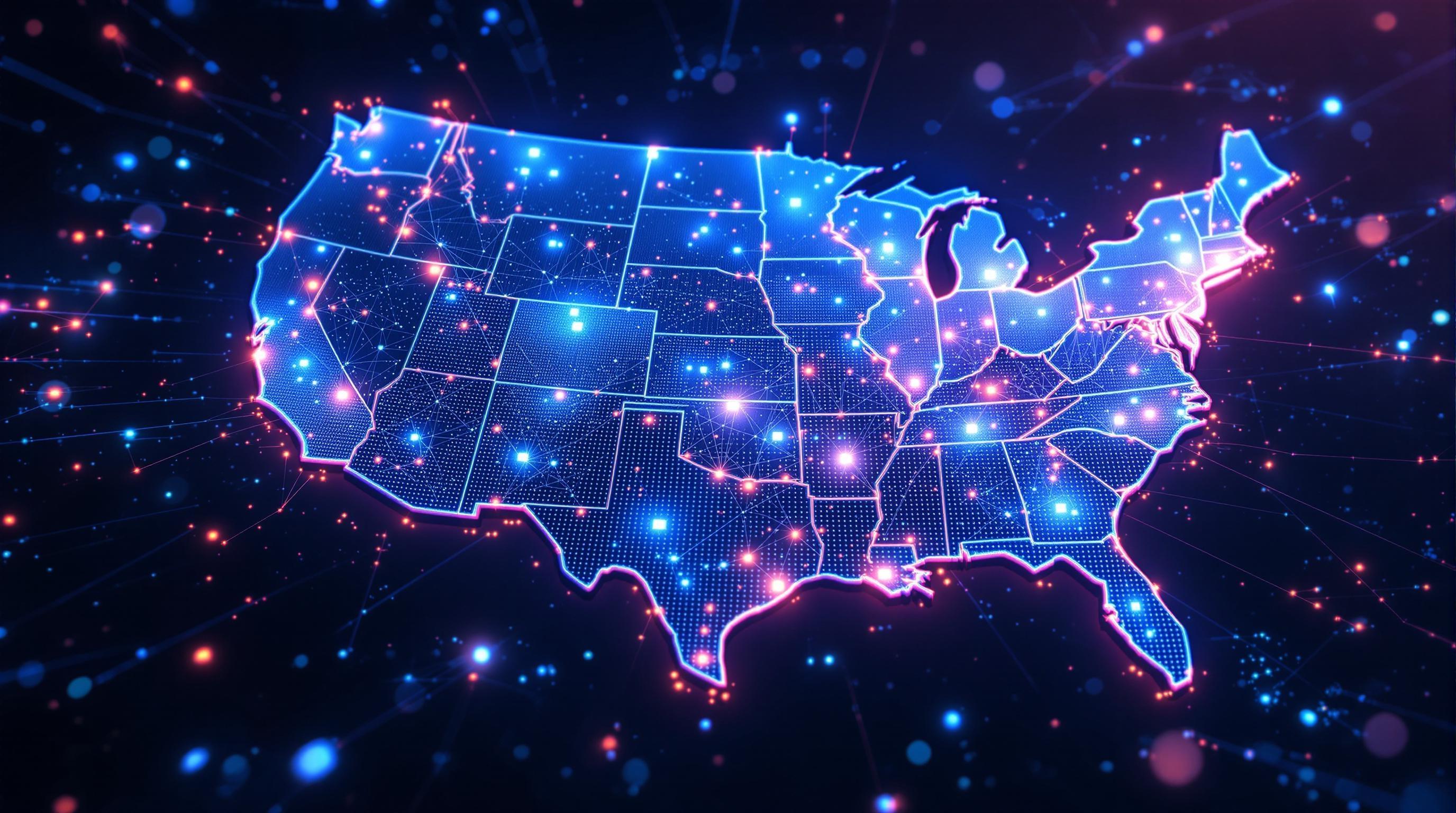
Job Creation: A Boost for the Economy
Beyond the technological advancements, the Stargate expansion is projected to create over 100,000 jobs. This economic boost is a welcome side effect of the AI boom, creating opportunities in fields ranging from data center management to AI research and development. It signifies that the AI revolution isn't just about machines taking over; it's also about creating new roles and industries that require human expertise and innovation. People will need to learn new skills such as prompt engineering.
Stargate and SoftBank: Facing Delays
While the OpenAI and Oracle partnership is progressing rapidly, the broader Stargate joint venture with SoftBank is reportedly facing delays. This highlights the complexities of large-scale infrastructure projects, where various factors can impact timelines and deliverables. While delays can be frustrating, they also provide an opportunity to refine strategies and ensure the project is ultimately successful. However, with so much happening in AI news it is hard to predict the future.
The expansion of the Stargate AI infrastructure initiative marks a pivotal moment in the AI landscape, setting the stage for even more groundbreaking advancements and applications. This collaborative effort between OpenAI and Oracle exemplifies the power of strategic partnerships in driving technological progress and underscores the transformative potential of AI in shaping the future.
Meta Rejects EU's AI Code of Practice, Citing Regulatory Overreach
Imagine a tech giant standing its ground against a wave of regulations, arguing that innovation is at stake. That's precisely the scenario unfolding as Meta has declined to sign the EU's voluntary Code of Practice for general-purpose AI models, igniting a fresh debate about the future of AI governance. This move highlights the growing tensions between regulatory bodies and tech companies as the AI landscape rapidly evolves. Let's delve into the heart of this controversy.
Meta's Stance: Legal Uncertainties and Overreach
Meta's decision to abstain from signing the EU's AI Code of Practice stems from serious concerns about its implications. The company argues that the code introduces significant legal uncertainties and, critically, oversteps the boundaries set by the AI Act. In Meta's view, the voluntary code could create a compliance minefield, potentially stifling innovation rather than fostering responsible AI development. It's a high-stakes gamble, signaling that Meta is willing to face potential regulatory heat to protect its vision for AI's future. Meta's argument boils down to this:
"We believe the current draft of the Code of Practice creates too much legal uncertainty and overlaps with the EU AI Act, potentially hindering innovation."
This stance underscores the delicate balance between fostering innovation and implementing responsible AI practices. Meta appears to suggest that over-regulation could inadvertently stifle the very progress it seeks to safeguard.
A Divided Industry: Delay vs. Compliance
Meta's rejection of the AI Code of Practice unveils a clear division within the AI industry. While European companies are reportedly calling for a delay in the implementation of the EU AI Act, citing similar concerns about hindering innovation, OpenAI has signaled its intention to sign the code. This divergence highlights the diverse approaches companies are taking towards navigating the evolving regulatory landscape. Some firms prioritize rapid development and are wary of potential constraints, while others emphasize compliance and collaboration with regulatory bodies. This split could have significant implications for the future of AI innovation in Europe, potentially creating an uneven playing field for companies of different sizes and strategic priorities. The EU AI Act Controversy continues to create tension.
Regulatory Scrutiny and Potential Fines
By choosing not to sign the EU's AI Code of Practice, Meta opens itself up to increased regulatory scrutiny. Non-signatories may face more rigorous oversight and the potential for substantial fines if their AI models are deemed to be non-compliant with the forthcoming AI Act. This risk adds another layer of complexity to Meta's decision, forcing the company to weigh the potential costs of non-compliance against the perceived benefits of avoiding the voluntary code's legal uncertainties. This decision highlights the importance of understanding AI Governance tensions.
Meta's Warning: Throttling AI Development
At the heart of Meta's resistance lies a concern that the EU's regulatory approach could inadvertently throttle AI development. The company argues that the code's ambiguities and potential overlaps with the AI Act create a chilling effect, discouraging innovation and investment in the European AI sector. Meta's warning serves as a stark reminder of the potential unintended consequences of regulation. It underscores the need for a balanced approach that fosters responsible AI development without stifling the creativity and progress that drives the industry forward. This is a significant point in the AI Revolution.
Meta's defiance illuminates a broader struggle over the future of AI governance. The company's rejection of the EU's AI Code of Practice serves as a wake-up call, prompting stakeholders to re-evaluate the delicate balance between regulation and innovation in the rapidly evolving AI landscape. As the EU AI Act looms on the horizon, the industry watches with bated breath, eager to see whether regulators and tech giants can find common ground or if further clashes are inevitable

Google Launches News Content Licensing Initiative for AI Training
The AI landscape is shifting beneath our feet, and even giants like Google are adjusting their strategies. One of the most recent developments is Google's launch of a news content licensing initiative designed to compensate news publishers for the use of their content in training AI models and powering AI-driven features.
Fair Compensation for News Content
This initiative addresses a growing concern among news publishers: the use of their content by AI models without adequate compensation. Google's project specifically targets content used in its AI Overviews, like those generated by Google Gemini (formerly Bard), and chatbot functionalities. The aim is to establish a system that provides fair remuneration for the intellectual property that contributes to the development and functionality of these AI systems.
The need for this initiative is driven by the increasing reliance of AI models on vast datasets of text and information, much of which is sourced from news publications. These publications invest significant resources in original reporting and content creation, and their work is essential for training AI to provide accurate and informative responses.
Addressing Declining Website Traffic
For years, news organizations have struggled to adapt to the digital landscape, facing declining print subscriptions and evolving online consumption habits. The rise of AI, particularly conversational AI interfaces, has introduced a new challenge. Many publishers are seeing a reduction in website traffic as users increasingly rely on AI-generated summaries and answers rather than clicking through to the original articles. This decline in traffic directly impacts revenue, making the issue of AI content compensation even more critical.
Consider the impact: if a user asks an AI chatbot about a recent political event and receives a comprehensive summary derived from various news sources, they may not feel the need to visit the websites of those news sources. This behavior, while convenient for the user, can significantly undermine the financial sustainability of news organizations.
Following in the Footsteps of Others
Google isn't the first AI powerhouse to recognize the need for content licensing agreements. OpenAI, the creators of ChatGPT, have already struck similar deals with news organizations. These partnerships typically involve providing financial compensation in exchange for access to news content for AI training purposes. Perplexity, known for its AI-powered search engine, has also implemented similar strategies.
These deals are seen as a step towards establishing a more sustainable ecosystem for news and AI. However, the specific terms and conditions of these agreements often remain confidential, leading to ongoing discussions about what constitutes fair compensation and how to ensure transparency in the process.
The Looming Threat of Training Data Scarcity
Beyond the immediate financial implications for news publishers, the Google initiative touches on a broader challenge facing the AI industry: the potential exhaustion of publicly available training data. As AI models become more sophisticated, they require increasingly massive and diverse datasets to learn and improve. Industry experts are beginning to warn that the current pool of public information may not be sufficient to sustain the continued growth of AI capabilities.
This looming scarcity is driving companies to seek alternative data sources, including private datasets, licensed content, and synthetic data. The Google news licensing initiative is, in part, a response to this challenge, ensuring access to high-quality, curated news content for AI training while also supporting the news industry. The quality of training data is paramount, and news content is typically well-edited and fact-checked, making it a valuable resource.
The intersection of AI development, news publishing, and data availability is complex and dynamic. Google's move to license news content for AI training represents a significant step toward navigating this landscape and fostering a more sustainable relationship between AI companies and content creators. As AI continues to evolve, expect to see further innovation in how data is sourced, licensed, and utilized.
Pentagon Finalizes $200 Million AI Contracts with Major Tech Companies
The U.S. Department of Defense is betting big on AI, finalizing contracts worth a staggering $200 million with some of the biggest names in the industry: OpenAI, Google, Anthropic, and even Elon Musk's xAI.
AI's March into the Military
These aren't just theoretical partnerships; these contracts are about real-world deployment. We're talking about integrating cutting-edge, frontier AI models into the very fabric of military, intelligence, and defense operations. Imagine AI-powered systems assisting with everything from threat assessment and strategic planning to logistics optimization and cybersecurity. The possibilities – and the potential impact – are immense.
Think of it like this: these AI models become the ultimate strategic advisors, capable of processing vast amounts of data and identifying patterns that would be impossible for human analysts to spot. This could lead to faster, more informed decision-making, giving the U.S. a significant advantage on the global stage. The AI News section covers similar advancements in various sectors.
The xAI Factor: Controversy and Commitment
The inclusion of xAI in this lineup has raised some eyebrows, largely due to the company's past struggles with content moderation on its Grok platform. It's a reminder that even the most advanced AI systems can be susceptible to biases and misuse. However, it seems the Pentagon is willing to look past these concerns, likely due to the unique capabilities and potential contributions xAI brings to the table. After all, companies like DeepMind AlphaFold have significantly advanced our understanding of complex problems.
Grok for Government: A Dedicated Platform
In response to these concerns, xAI has introduced 'Grok for Government,' a dedicated platform designed to meet the specific needs and security requirements of the U.S. government. This is a crucial step, signaling a commitment to responsible AI development and deployment within the defense sector. Think of it as a specially hardened version of Grok, designed to withstand the rigors of government use.
Accelerating AI Adoption: A Strategic Imperative
Ultimately, these contract awards demonstrate a clear commitment to accelerating the adoption of AI across the defense landscape, even in the face of potential risks. The Pentagon clearly believes that the benefits of AI – enhanced situational awareness, faster decision-making, and improved operational efficiency – outweigh the concerns surrounding content moderation and bias. It’s a calculated gamble, but one that could reshape the future of national security. This also ties into discussions around AI Regulation and ethics, as the government must ensure responsible AI implementation.
These contracts underscore the growing importance of AI in national security, raising questions about the ethical implications of deploying such powerful technology on the battlefield. As AI continues to evolve, it will be crucial to have open and transparent conversations about its role in shaping the future of warfare. Learning AI Fundamentals can help the public understand these complexities.
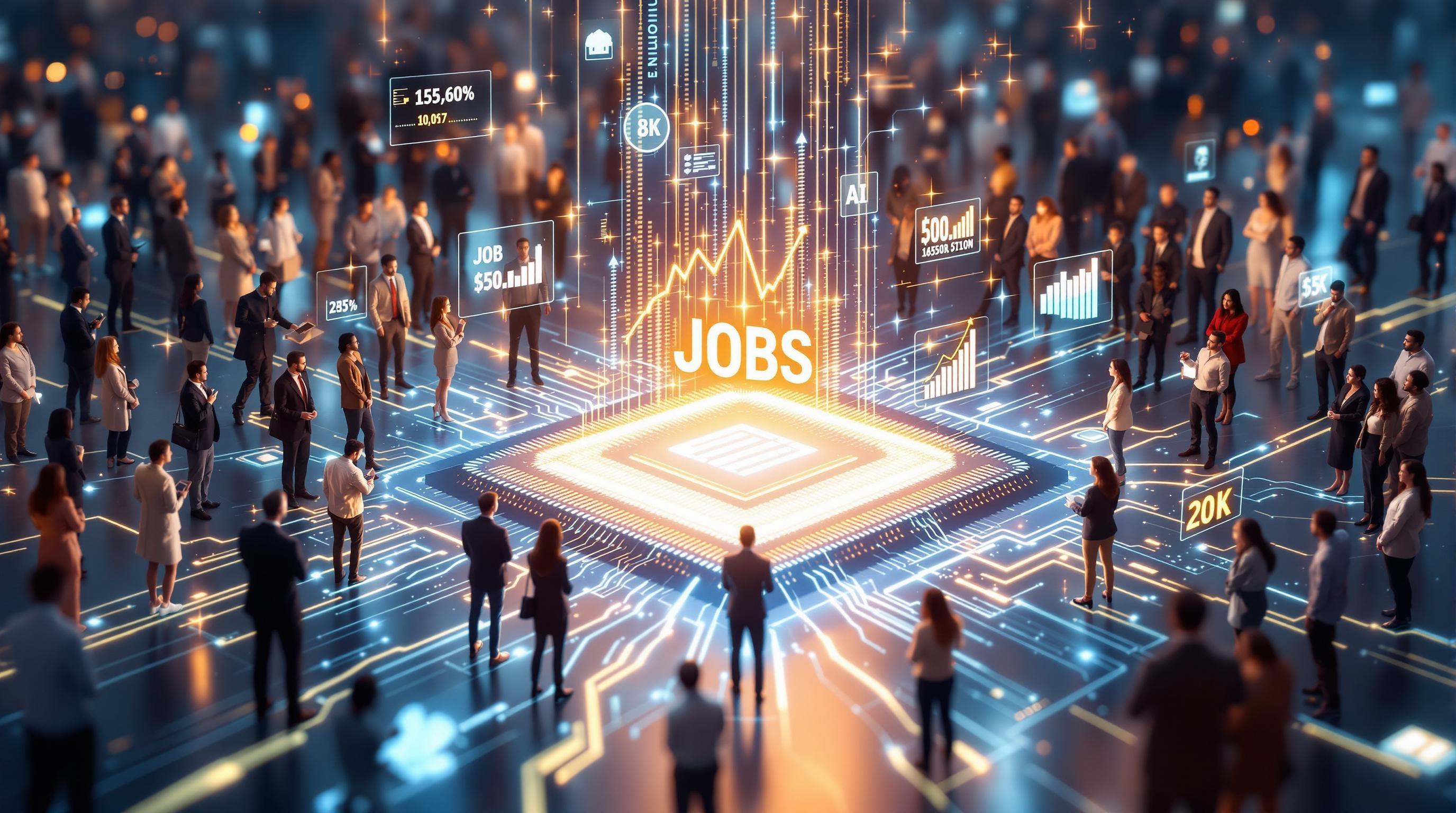
NatWest Group Announces Major AI Transformation Partnership
The financial sector is poised for a seismic shift, and NatWest Group is positioning itself at the forefront. They've just announced a landmark five-year partnership with Accenture and Amazon Web Services (AWS) to undertake a comprehensive AI and data transformation initiative.
NatWest's Ambitious AI Vision
This isn't just a minor upgrade; it’s a full-scale modernization of NatWest's digital capabilities. The goal is to leverage the power of AI to deliver more personalized and efficient services to its customers. Think about it: instead of generic banking solutions, customers could receive tailored advice and support based on their individual financial needs and goals. This transformation is set to impact nearly every facet of the banking experience.
A Three-Pronged Transformation Approach
The transformation initiative is strategically focused on three key areas:
Customer Experience: NatWest aims to create more intuitive and personalized interactions for its customers. Imagine AI-powered chatbots providing instant support, or predictive analytics anticipating customer needs before they even arise.
Operational Efficiency: By automating routine tasks and streamlining processes, NatWest hopes to significantly reduce operational costs and improve efficiency. This could translate to faster transaction times and quicker resolution of customer inquiries.
Risk Management: AI can play a crucial role in identifying and mitigating financial risks. NatWest plans to use AI to enhance its fraud detection capabilities and improve its overall risk management framework. This could involve tools similar to ZeroGPT, which helps in identifying AI-generated content, but applied to detecting fraudulent activities.
A Titan Among Transformations
What makes this partnership particularly noteworthy is its sheer scale. It's being hailed as one of the largest AI transformation initiatives ever undertaken in the European banking sector. This signals a significant commitment from NatWest to embrace AI as a core driver of its future strategy. It's not just about keeping up with the competition; it's about setting a new standard for AI-driven banking. The transformation of NatWest is an exciting advancement in the sphere of AI in Financial Services.
The Rise of AI-Driven Banking
NatWest's partnership underscores a broader trend in the financial services industry: the increasing adoption of AI to enhance operations, improve customer experiences, and manage risks more effectively. Banks are recognizing that AI is no longer a futuristic concept but a present-day necessity. As more financial institutions embrace AI, we can expect to see even more innovative and personalized banking services emerge.
This AI News signals a pivotal shift in how banking operates. As AI-Driven Banking Transformation progresses, we'll likely see more financial institutions forging similar partnerships. The focus on personalized banking services and advanced risk management will become the norm, creating a more efficient and secure financial landscape. Looking at AI solutions, firms can even use something like Hubspot to improve sales and marketing.
AI Browser Innovation Accelerates with New Productivity Features
The race to redefine the internet browser with AI is intensifying, as companies like The Browser Company and Perplexity are rolling out innovative features aimed at boosting productivity. These advancements signal a move toward more intuitive and automated browsing experiences.
AI-Native Browsing Experiences
Traditional web browsers are evolving into intelligent assistants. Instead of simply displaying web pages, these new AI-native browsers proactively help users accomplish tasks, extract information, and automate workflows. Think of it like having a knowledgeable research assistant built directly into your browser, ready to help you navigate the complexities of the web. This shift signifies a fundamental change in how we interact with the internet, making it more efficient and user-friendly. This is more than just a cosmetic change; it's a complete reimagining of the browsing experience, powered by the latest advancements in artificial intelligence. For example, imagine instantly summarizing a lengthy research paper or automatically generating a travel itinerary based on your browsing history. That's the promise of AI-native browsers.
Dia Skills Gallery
The Browser Company, known for its innovative Arc browser, recently launched the Dia Skills Gallery. This gallery offers a collection of AI-powered browser shortcuts designed to streamline common tasks. These "skills" act as quick, AI-driven actions you can trigger directly from your browser. Imagine needing to quickly summarize a long article – a Dia Skill can do that with a single click. Or perhaps you want to compare prices of a product on multiple websites – a dedicated skill can automate that process, saving you valuable time and effort.
AI-Powered Shortcuts: Access AI functionalities directly within the browser.
Task Automation: Automate repetitive tasks with one-click actions.
Customization: Tailor the browser to specific workflows.
This initiative reflects a broader trend toward embedding AI directly into the tools we use daily, making technology more accessible and efficient.
Perplexity Comet Browser
Perplexity, already a prominent player in the AI search space, has upped the ante with its Comet browser. Comet distinguishes itself by focusing on task automation capabilities. It's designed to learn your browsing habits and proactively suggest ways to automate repetitive actions. Imagine you regularly check a set of websites for news updates each morning. Comet can learn this pattern and automate the process, delivering a curated summary of the latest headlines directly to you.
Task Automation: Streamlines repetitive browsing activities.
Proactive Assistance: Learns user habits and suggests automation opportunities.
Integration with Perplexity AI: Seamlessly combines browsing with AI-powered research and analysis. This builds on Perplexity's existing strength as an AI-powered search engine, offering users a more integrated and efficient research experience. It's not just about finding information; it's about using AI to actively manage and automate your online workflow.
Agentic Browsing
Both Dia Skills and Perplexity's Comet browser point toward the future of "agentic browsing," where AI actively anticipates user needs and automates tasks. The focus is on eliminating repetitive actions and creating a more intuitive human-computer interaction. Instead of passively browsing the web, users will increasingly interact with AI-powered agents that understand their goals and proactively assist them in achieving them. These AI agents could handle everything from booking travel arrangements to managing social media accounts, freeing up users to focus on more creative and strategic tasks. Think of it as having a digital assistant that lives inside your browser, constantly learning and adapting to your needs. As AI models become more sophisticated, we can expect these agentic browsing experiences to become even more powerful and personalized, fundamentally changing the way we interact with the internet. The increasing sophistication of Prompt Engineering will undoubtedly play a key role in unlocking the full potential of these agents.
These innovations mark a significant leap toward a more intelligent and user-friendly web experience, paving the way for further AI integration in our daily digital lives. Next, we'll look at how AI is transforming the creation and consumption of video content.

Construction Industry Adopts AI for Project Management and Safety
The construction industry, often seen as a traditional sector, is quietly undergoing a technological revolution, and AI is leading the charge. The fusion of artificial intelligence with construction is no longer a futuristic fantasy; it's a present-day reality rapidly reshaping project management and safety protocols.
AI Funding Fuels Construction Tech
The increasing adoption of AI in construction is underscored by significant investments in the sector. One prime example is Buildots, an AI-powered construction tech company, which recently secured a substantial $45 million in funding. This injection of capital demonstrates the growing confidence investors have in AI's ability to solve long-standing challenges within the construction industry, paving the way for wider adoption and further innovation.
Helmet Cams and AI Vision
So, how exactly is Buildots transforming construction sites? Their innovative approach hinges on the use of helmet-mounted cameras worn by construction workers. These cameras continuously capture visual data from the site, which is then fed into Buildots' AI platform. Using advanced computer vision techniques, the AI analyzes the footage to automatically track project progress. This provides real-time insights into the status of various construction activities, offering a level of granularity and accuracy previously unattainable.
IHP's National Rehabilitation Centre
The impact of Buildots' technology can be seen in real-world applications, such as its utilization by IHP on the National Rehabilitation Centre construction project. IHP is leveraging the Buildots AI Platform to monitor progress, identify potential bottlenecks, and ensure adherence to the project's timeline and budget. The National Rehabilitation Centre is a project of national importance, and the adoption of AI reflects a commitment to efficiency and innovation.
AI-Powered Progress Tracking
At its core, the AI system functions by comparing the actual progress observed on the construction site against the planned progress outlined in Building Information Models (BIM). BIM is a digital representation of the physical and functional characteristics of a facility. By comparing the real-world progress captured by the helmet-mounted cameras with the BIM, the AI can automatically identify discrepancies and potential issues. This proactive approach allows project managers to address problems early on, preventing costly delays and rework.
Addressing Industry Challenges
The construction industry is plagued by several persistent challenges, including labor shortages, cost overruns, and project delays. The integration of AI offers a powerful solution to these problems. By automating progress tracking, identifying potential risks, and optimizing resource allocation, AI helps construction companies improve efficiency, reduce costs, and deliver projects on time. Furthermore, in an era where skilled labor is increasingly scarce, AI can augment the capabilities of existing workers, enabling them to achieve more with less.
AI is not about replacing human workers, but empowering them to be more productive and effective.
As the construction sector grapples with increasing complexity and tighter margins, the role of AI in Construction will only become more critical. The advancements pioneered by companies like Buildots are just the beginning of a broader transformation, where data-driven insights and intelligent automation reshape the way buildings are designed, constructed, and managed. Looking ahead, we can anticipate even more sophisticated applications of Construction Management AI and predictive analytics construction, further solidifying AI's position as an indispensable tool for the industry.

MIT Researchers Achieve Breakthrough in AI Image Generation Speed
Imagine generating photorealistic images in the blink of an eye, right on your laptop – MIT researchers are making that dream a reality. Their new AI image generation method, known as HART (Hybrid Autoregressive Transformer), is poised to revolutionize the field.
HART: A Quantum Leap in Image Generation
The magic behind HART lies in its innovative approach to AI image generation. While diffusion models, like those used in Midjourney, a popular tool for creating stunning visuals, have become the standard for high-quality output, they're notoriously slow. HART, on the other hand, leverages a hybrid approach, combining the strengths of both autoregressive and diffusion techniques. This allows it to produce images of comparable quality up to nine times faster.
Think of it like this: diffusion models painstakingly "paint" an image from pure noise, whereas HART uses its autoregressive component to sketch out the basic form quickly, then refines the details with a diffusion process. It's like going from painting every pixel individually to first creating a detailed outline and then filling it in.
From the Lab to Your Laptop
One of the most exciting aspects of HART is its accessibility. Unlike many cutting-edge AI models that require massive computing resources, HART is designed to run efficiently on commercial laptops and even smartphones. This opens up a world of possibilities for developers and creators who may not have access to expensive hardware. It democratizes access to fast AI image generation in a significant way.
Applications Beyond Imagination
The implications of this MIT AI breakthrough extend far beyond simply generating cool pictures. Consider the impact on fields like:
Autonomous Vehicle Training: Imagine rapidly generating countless realistic scenarios to train self-driving cars, vastly accelerating their development and safety.
Robotics Simulation: Robots can be trained in simulated environments that are generated in real-time, allowing them to learn and adapt to complex tasks much faster.
Gaming: Game developers can use HART to quickly create detailed and diverse game assets, enriching the gaming experience.
Design: Designers can rapidly prototype visual ideas and iterate on designs in a fraction of the time it currently takes.
The Future of AI Image Generation
HART represents a significant step forward in AI Image Generation. By overcoming the speed limitations of existing methods while maintaining high image quality, it paves the way for a future where AI image generation is both powerful and accessible. Keep an eye on AI News for further developments in this rapidly evolving field.
This HART AI Model truly changes the game, bringing near real-time image creation to everyday devices, which could revolutionize industries reliant on visual content and simulation. The team at MIT has not only created a faster model, but one that's far more accessible, potentially empowering a new wave of AI-driven innovation. Up next, we'll examine the ongoing debate around AI ethics and bias...

Regulatory Landscape Continues Evolution Across Jurisdictions
The global race to define the rules of AI is far from over, as nations and regions continue to grapple with the implications of this rapidly evolving technology. Let's break down some of the key developments in the regulatory landscape.
AI Regulatory Landscape
Across the globe, jurisdictions are actively developing and advancing their own oversight frameworks for artificial intelligence. This includes everything from establishing ethical guidelines to enacting concrete laws designed to govern AI development and deployment. Each region's approach reflects its unique values, priorities, and concerns, leading to a complex and sometimes fragmented global regulatory environment. For example, some countries are focusing on promoting innovation and economic growth through AI, while others are prioritizing consumer protection and ethical considerations. Keeping abreast of these diverse approaches is crucial for any organization involved in AI, as it impacts everything from product development to market entry strategies.
EU AI Act Implementation
The EU AI Act, a landmark piece of legislation aimed at regulating AI across the European Union, continues its implementation phase. This involves establishing clear guidelines and standards for AI systems, categorized by risk level. While the Act is lauded by some as a crucial step towards responsible AI development, it faces considerable resistance from industry stakeholders who worry about its potential to stifle innovation and create bureaucratic hurdles. The Act’s comprehensive approach, which includes strict requirements for high-risk AI systems, is forcing companies to rethink their AI strategies and invest in compliance measures. The EU’s move could set a global precedent, influencing other regions' approaches to AI governance.
AI in Education Regulation
The U.S. Department of Education has stepped into the arena, issuing guidance on the responsible and effective use of AI in schools. This guidance aims to help educators and administrators leverage the potential of AI tools while mitigating potential risks. The focus is on ensuring equitable access to AI-powered learning resources and addressing concerns about data privacy, algorithmic bias, and the impact of AI on teaching practices. For example, tools like Quizizz (not in the sitemap), which uses AI to generate quizzes and learning games, would fall under this scrutiny. This move signals a growing awareness of the transformative potential of AI in education, alongside a commitment to ensuring that its integration is ethical, equitable, and aligned with educational goals.
Federal AI Oversight
Federal priorities in the U.S. increasingly emphasize AI literacy across various sectors. Government agencies are launching initiatives to educate the public, train the workforce, and promote a deeper understanding of AI technologies. This includes funding research programs, developing educational resources, and fostering collaborations between academia, industry, and government. The goal is to empower citizens to navigate the AI-driven world, equip the workforce with the skills needed for AI-related jobs, and ensure that AI development aligns with national interests. This focus on AI literacy is viewed as essential for fostering innovation, promoting economic growth, and mitigating potential risks associated with AI.
Notably, the Trump administration is actively working to preempt state-level AI regulations. This effort aims to create a unified, national framework for AI governance, preventing a patchwork of conflicting state laws that could hinder innovation and create compliance challenges for businesses operating across state lines. The administration argues that a national approach is essential for maintaining U.S. competitiveness in the global AI race and fostering a predictable regulatory environment. This preemption strategy reflects a broader debate about the appropriate balance between federal and state authority in regulating emerging technologies.
The evolving regulatory landscape signifies a critical juncture for AI, demanding a balanced approach that fosters innovation while ensuring ethical and responsible deployment.
As regulatory frameworks continue to take shape, businesses and individuals alike must remain vigilant, adapting to the changing rules of the game. Staying informed about the latest developments in AI regulation is crucial for navigating the complexities of this rapidly evolving field and ensuring responsible innovation. The push for AI literacy and unified national frameworks suggests a move towards more structured governance, which will likely influence how AI is developed and used in the years to come. This evolving landscape sets the stage for our next exploration: the ethical dilemmas that increasingly dominate the AI conversation.

🎧 Listen to the Podcast
Hear us discuss this topic in more detail on our latest podcast episode: https://creators.spotify.com/pod/profile/bestaitools/episodes/Daily-AI-Update--Jul-23--2025-Trumo--OpenAI--Meta-EU-Buildots--MIT-e35tgj8
Keywords: AI Action Plan, Artificial Intelligence, AI Infrastructure, AI Regulation, AI Development, OpenAI, Oracle Stargate, EU AI Act, AI Licensing, AI in Construction, AI Image Generation, AI Browsers, NatWest AI Transformation, Pentagon AI Contracts, AI in Education
Hashtags: #AI #ArtificialIntelligence #AIActionPlan #TechNews #Innovation
For more AI insights and tool reviews, visit our website https://best-ai-tools.org, and follow us on our social media channels!
Website: https://best-ai-tools.org
X (Twitter): https://x.com/bitautor36935
Instagram: https://www.instagram.com/bestaitoolsorg
Telegram: https://t.me/BestAIToolsCommunity
Medium: https://medium.com/@bitautor.de
Spotify: https://creators.spotify.com/pod/profile/bestaitools
Facebook: https://www.facebook.com/profile.php?id=61577063078524
YouTube: https://www.youtube.com/@BitAutor
Recommended AI tools
AI Undresser
Image Generation
Uncover the hidden truth
Credo AI
Data Analytics
The trusted leader in AI governance
Islam & AI
Conversational AI
Bridging Islam and Artificial Intelligence
Responsible AI Institute
Conversational AI
Empowering Ethical AI

